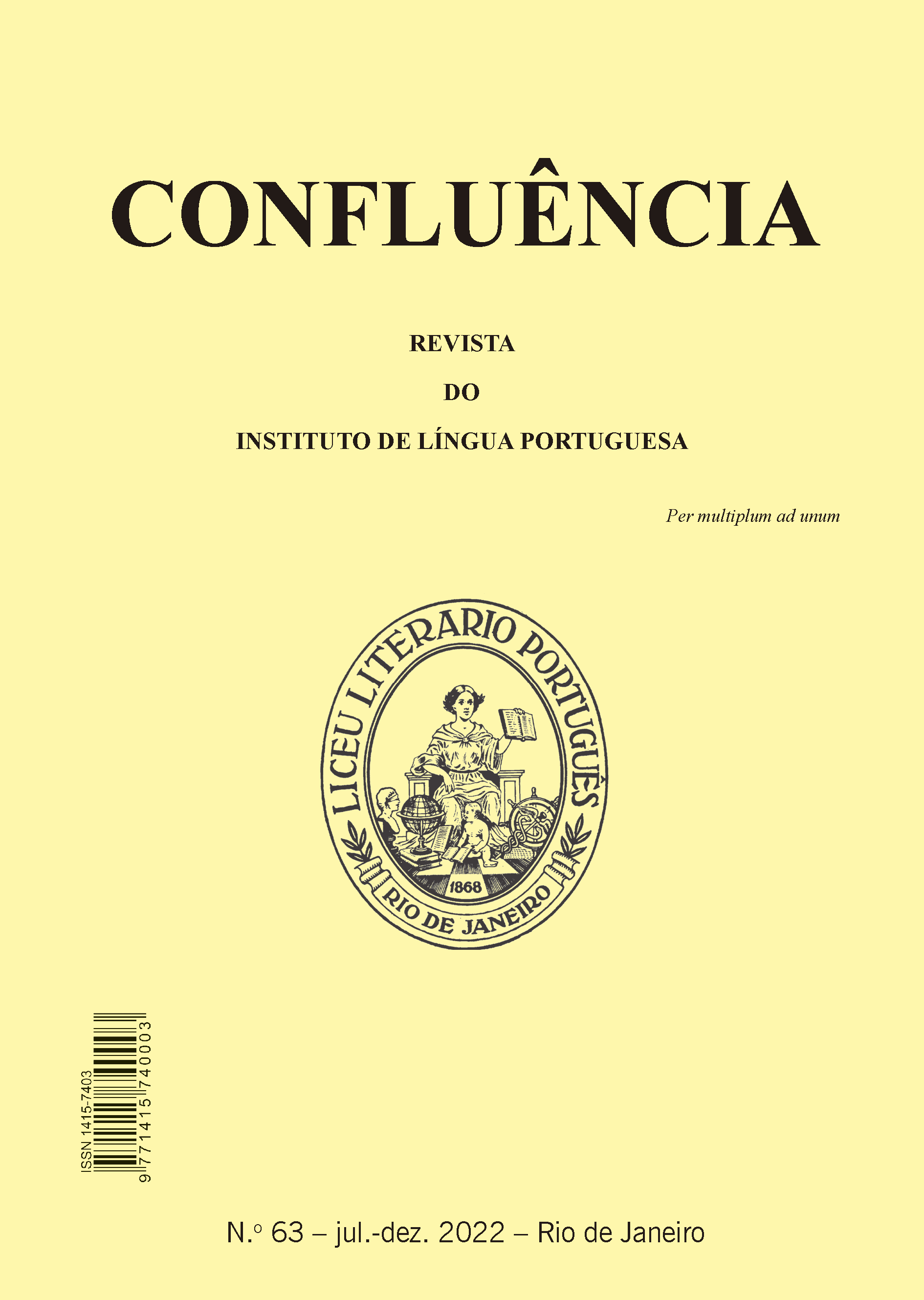Parasynthetic verbs in Bento Pereira’s work
DOI:
https://doi.org/10.18364/rc.2022n63.1308Keywords:
Lexicography, Morphology, Parasynthetic verbsAbstract
This article presents some notes on the history of the Portuguese language in the 17th century and on the biography of the lexicographer Bento Pereira. From his work we select the “appendiz” Florilegio dos modos de fallar, e adagios da lingoa Portuguesa, edited in 1655 and divided into two parts: the first one, subtitled das frases portuguezas, a que correspondem as mais puras, é elegantes Latinas, como tiradas de Marco Tullio, & outros Authores de primeira classe; the second one records os principaes adagios portugueses, com seu latim prouerbial correspondente, pera se aiuntar a Prosodia, & Thesouro portugues, como appendiz, ou complemento (1655). Examples of parasynthetic verbs are analyzed, the morphological schemes constituted by the prepositions a-, des-, en-/em- and the suffixes -ar, -ecer are explained, with special reference to the noun or adjective which constitutes the basis of the derivation and from which the lexicographical definition is elaborated. Information is incorporated on the words with which they are combined, used in the examples chosen in this appendix of the main work of the Jesuit lexicographer, an undisputed authority in bilingual and meta-orthographic dictionaries. An Annex is attached to the References, as a synthetic vocabulary of the entries and articles taken from the work, with details of synonymy and other complementary information.
Downloads
References
COVARRUBIAS, S.: Tesoro de la lengua castellana o española según la impresión de 1611, con las adiciones de Benito Remigio Noydens publicadas en la de 1674 (ed. 1987 de Riquer). Barcelona: Alta Fulla, 2003, 3ª ed.
CUNHA, C, ; CINTRA, L. F.: Nova gramática do português contemporâneo. Rio de Janeiro: Nova Fronteira, 1985.
DCECH = COROMINAS, J.; PASCUAL, J.A.: Diccionario crítico etimológico castellano e hispánico. Madrid: Gredos, 6 Vols. 1980-1991.
DLPC = Dicionário da Língua Portuguesa Portuguesa Contemporânea. Lisboa: Verbo, 2 vols, 2001.
HENRÍQUEZ, Mª do C. Las Paremias en el ‘Tesoro’ de Sebastián de Covarrubias (1539-1611). In: Revista Confluência, Especial 30 anos, junho 2021a, p. 78-147.
HENRÍQUEZ, Mª do C.: Las paremias en el Tesoro de Sebastián de Covarrubias y en la Prosodia de Bento Pereira. In: Revista de Lexicografía, XXVII, 2021b, p.65-84.
HENRÍQUEZ, Mª do C.: Os adagios da língua portuguesa na obra de Bento Pereira (1605-1681). In: Revista Confluência, n. 62, jan.-jun. 2022, p. 58-80.
HOUAISS. Dicionário Houaiss da Língua Portuguesa. Rio de Janeiro: Objetiav, 2001.
MACHADO, J.P.: Dicionário etimológico da língua portuguesa (3ª ed.). Lisboa: Livros Horizonte, 1977.
MENÉNDEZ PIDAL R.: Manual de gramática histórica española (12ª ed.). Madrid: Espasa Calpe, 1966.
NUNES, J. J.: Compêndio de gramática histórica portuguesa. Fonética e Morfologia (8.ª ed.). Lisboa: Livraria Clássica Editora, 1945.
RAE; ASALE = Real Academia Española & Asociación de Academias de la lengua española. Nueva gramática de la lengua española. Madrid: Espasa Calpe, 2010.
SCALISE, S.: Morfologia. Bologna: Il Mulino, 1994.
SERRANO, D.: Las formaciones parasintéticas en español. Madrid: Arco Libros, 1995.
SILVA-NETO, S. da (1979). História da língua portuguesa (3ª ed.). Rio de Janeiro: Presença, 1979.
WILLIAMS, E. B.: Do latim ao português: fonologia e morfologia históricas da língua portuguesa (3ª ed.). Rio de Janeiro: Tempo brasileiro, 1975.
Downloads
Published
Issue
Section
License
Copyright (c) 2022 Maria do Carmo Henríquez

This work is licensed under a Creative Commons Attribution-NonCommercial 4.0 International License.
The author who publishes in this journal agrees to the following terms: The author maintains the copyright and grants the journal the right of first publication, with the work simultaneously licensed under the Creative Commons Attribution License that allows the sharing of the work with acknowledgment of the authorship and initial publication in this journal. The author is authorized to take additional contracts separately, for non-exclusive distribution of the version of the work published in this journal (eg publish in institutional repository or as a book chapter), with acknowledgment of authorship and initial publication in this journal. The author is allowed and encouraged to publish and distribute his work online (eg in institutional repositories or on their personal page) at any point before or during the editorial process, as this can generate productive changes, as well as increase the impact and citation of the published work.








